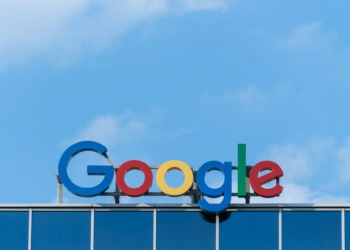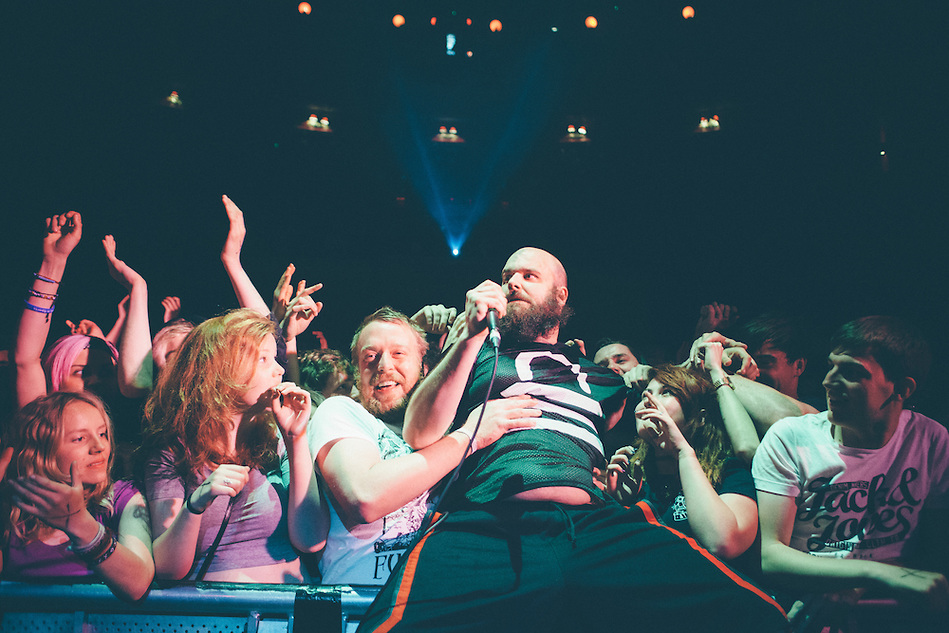EDITOR’S NOTE: Interview with Terry Torok, Chief Innovation Officer at Enactus. THIS PIECE IS PART OF A SERIES EXPLORING THE SUSTAINABLE DEVELOPMENT GOALS. SEE THE INTRODUCTION TO THE SERIES HERE.
Empowerment is the intersection of freedom and agency to mold one’s reality, enabling change, progress, and a form of autonomy. In the absence of access to opportunity and resources, however, empowerment is difficult to realize. Proportionality of access must also be equal if empowerment is to come to fruition. Unfortunately, these vital components do not exist in many areas of the world, thus empowerment remains out of reach. With the adoption of the 17 Sustainable Development Goals last year, however, every nation is now responsible for developing tangible policies that put the respective country on course to achieving the SDGs by 2030. To aid in this effort, numerous NGOs have incorporated the SDGs into their own missions, and in the case of Enactus, the goals of the SDGs were already at the heart of their work from the beginning. I spoke with Enactus Chief Innovation Officer, Terry Torok on their work and how entrepreneurial action is paving the way for SDG 8 by promoting inclusive and sustainable economic growth, full and productive employment and decent work for all.
Innovation and empowerment are at the heart of entrepreneurial action, crucial to achieving the SDGs by 2030.
EDITOR’S NOTE: THIS INTERVIEW HAS BEEN EDITED AND SHORTENED FOR PUBLICATION
Impakter: Could you briefly describe what you do and the work done by Enactus?
Terry Torok.: Chief Innovation Officer at Enactus. We are a global organization that invests in college students who take entrepreneurial action for others to create a better world for us all. We bring together bright young innovative minds, along with academic and business leaders in communities throughout the world to help advance innovative projects into sustainable business opportunities. These projects typically show proof or promise of becoming a social enterprise. We define social enterprise as an economically sustainable business model that positively impacts people, planet and prosperity and, as you may know, a social enterprise can be organized either as a for-profit or a not-for-profit. So it’s really up to Enactus students to put their passion into action, it may be in order to help another organization, or help create a new economy for a community. Enactus students place brave new ideas for social impact into action. They work to create business solutions that help sustain our planet and enhance people’s livelihoods.
It seems like one of the pitfalls surrounding the Millennium Development Goals (MDGs) was a lack of communication facilitating a cross-sector approach in the implementation of the goals. Enactus already seems to be employing this strategy, including academia, business leaders, and nonprofit organizations.
T.T.:The Global Goals for 2030 were developed from some measurable successes of the MDG’s, as well as, the lessons of communication failures. I believe the new Global Goals for 2030 started right, with the world’s largest survey to assess world needs across communities of various levels of economic development. Anybody who wrote off the MDG’s as “someone else’s problem” should have a fresh look at the significance of 2030 Global Goals as “everybody’s opportunity”.
At Enactus, we engage excellent business leaders who are often under attack in some media as being the enemy of sustainability. I think that most CEOs of large companies don’t go to bed at night thinking evil thoughts; they have children and families too, and if they can adopt ways to create a better world and sustainability, I am certain that they want to go there as well; not only for their families, but for their employees and customers. Purpose-driven brands are the new future for Generation Z and all savvy customers.
Academia is instrumental in collaborating with Enactus and inspiring students into action. Often our academic advisors across our 1,700+ campuses worldwide are the champions of Enactus. They know the real-world experience and the hard work of Enactus students helps put theory into action and prepares students for both independence in creating their own destiny and collaboration in building business solutions for a better planet.
 PHOTO CREDIT: Flickr/Enactus
PHOTO CREDIT: Flickr/Enactus
Do you think that Enactus is making more connections between students, academia, business leaders, community leaders, local non-profits than before? Does Enactus directly facilitate these connections?
T.T.: At Enactus, we provide a proven framework for students, academia and business leaders to naturally collaborate on projects. When compared to other organizations, we are a bit of an anomaly; first of all, we often collaborate with other NGOs and support their efforts, second of all, we don’t declare to our students- let’s go help orphans, let’s go create clean water, let’s go focus on food waste. Our students select projects based on their own passions and interests that often achieve multiple objectives and support many people in living better lives and enjoying a more sustainable planet. We’ve been driving solutions in a 17-lane highway around the world for 40+ years, and low and behold along comes the 17 SDGs that perfectly frame and support exactly what Enactus has been doing all these years.
We see many advantages to aligning with the 17 Sustainable Development Goals. More and more companies are declaring the SDGs they support, not only through CSR, but also through cause marketing, employee engagement, and customer loyalty programs. We can deliver the action behind the brand intention and help deliver a new generation of supportive customers. The amazing hearts and minds of 70,000+ brilliant students every year that are part of Enactus are a force for good, it’s an excellent opportunity for qualified companies to align with us.
How does Enactus visualize the world of young entrepreneurs in contributing to sustainable economic growth?
T.T.:Well, I see SDGs 8 (economic growth) and 9 (innovation) as two doors that swing open to help access all the other SDGs. Specifically, Enactus students look at how business innovation and sustainable opportunities can be applied in a variety of challenges. They look at ways in which they can apply financial literacy, job creation and training and all of the tools that go into sustainability towards areas of reducing poverty, food waste reduction, gender equality, clean water and sanitation, For our students, who are driven by entrepreneurial action themselves, not only are they able to help create a better community or a better environment, but they are able to drive their own careers and create new jobs. It’s being mindful that helping yourself in a career in order to help those around you is a win-win.
What do you think it is about youth that is so important, particularly youth entrepreneurs?
T.T: There are many generations, that unintentionally, made vast mistakes as far as the health of the planet, and I think it’s important to help collaborate with young people and share what the mistakes of the past have been—to make sure we’re learning from failures and, of course, correcting and truly investing in the future. Sure, in retrospect, it’s clear the world of business could have done a much better job taking care of the planet. If we don’t share the lessons of failure effectively, how are we ever going to help plan the future? There is a tremendous amount of wisdom to be shared especially in today’s high speed of change and transition from a world of industry, into a world of technology and innovation.
Cross-generational sharing, mentorship reverse mentorship are all critical. This is not a hand-off to the next generation… that would be like cleaning up after somebody else’s party, that’s not cool. As long as we are alive on this planet, we are indebted to it.
 PHOTO CREDIT: Flickr/ Enactus
PHOTO CREDIT: Flickr/ Enactus
How do you think technology has and continues to change the game of entrepreneurship, specifically in the projects you see at Enactus? What about social media?
T.T.: When it comes to technology, we are in a most amazing time in history where the speed of change has accelerated beyond belief. Once we embrace ephemeralization and the knowledge that business innovation is the path to abundant opportunity; we can get on with making smart decisions for the future. Enactus students are quick adapters, while technology is more and more core to Enactus projects, even more so is innovative methodologies, like finding new ways to execute labor-intensive tasks. Enactus students not only adapt to new technology and innovation quickly, they excel at sharing this knowledge with at-risk communities. This not only brings disadvantaged communities up to speed with the world but in many cases it jumps them ahead of the curve. This is a world of abundant opportunity for social entrepreneurs… this is the new future.
We’re at a critical space and place in time where we need to embrace the lessons of history and the rapid change of the future. Generation Z is the first to grow up fully embracing the Internet and mobile technology. So in one hand you hold a mobile phone that holds more computing power than it took to get the first man on the moon; it also holds more access to information than all previous generations had in the history of the world. That, on one hand, is pretty cool, but on the other hand if you look at the hand without a cellphone as the hand that created the technology as well as the hand that can reach into the soil, reach out to another human being, the hand that can make a fire, bake bread and make clear cultural connections. Which hand is more powerful… the one dependent on technology or the one free to create it? Enactus students are typically very well-balanced with both hands working for humankind.
With the influence of social media, we’re living in a short-attention-span theater. It’s a shift in world behavior. We seem to have less tolerance of thinking for future generations, but the world is begging us to do so. We are flying through space on a mobile home called earth at 67,000 miles per hour, or 110,000 kilometers per hour. You’d think we’d all be getting along and doing everything possible just to hang on and maintain our home. The challenge with social media is also the solution. Generation Z is connected and supportive of transparency and purpose-driven brands, especially if they are part of the story. The social-sphere has connected us across all borders and boundaries. At Enactus we are working hard to share short and powerful stories of impact for good. We are producing new topic competitions called “Races” that not only drive focused impact, they create compelling content to be shared in the social-sphere. We are now planning the “Water Race”, and the “1 Race 2 End Waste” to start early in 2017. These Races take on world-challenges and support long-term thinking, encouraging projects to become sustainable businesses for social impact. This is part of aligning with the 2030 Global Goals, but we don’t end there, we are thinking for generations ahead.
Related Article: “INTERVIEW WITH MITCHELL JOACHIM: AN INNOVATOR IN ECOLOGICAL DESIGN“
With all this new access to information and technology, is it difficult to stay focused on achieving the most impact?
T.T.: The beauty of it is not being overwhelmed by it and taking it all in stride, picking your place so you can make an impact, making a mark, creating a difference and in doing so creating a better world for yourself, a new economy, that can be shared with others.
What do you think facilitates/fosters the most creative environment, creates the best spaces for entrepreneurs in the context of Enactus?
I believe we are born with an unlimited abundance of creative currency.
T.T.: At the start, I believe we are born with an unlimited abundance of creative currency. I think we learn through play, we learn through awe and wonderment and discovery… that is what we’re born with, and it is abundant. I think as we grow up through life, we learn to get channeled into what we’re supposed to do, and we unlearn a lot of opportunity that was open to us through imagination and creativity. I think that at a very young age, embracing that wonderment of childhood is critical, and while there is a lot of focus on STEM (Science, Technology, Engineering, and Math) I think of embracing STEAM. It has a lot more energy when you add Arts Education into STEM. What you get is more imagination, innovation, and creativity. Arts Education allows you to go through trial and error, receive immediate feedback, explore the seeds of entrepreneurship and be in control of your own solutions—a holistic approach from the start.
I think at Enactus, there is a real draw for students who think in terms of creative solutions, students who have a head for business and a heart for the world. They, by nature, have an insatiable curiosity, desire, and drive; they have a sense of giving. That is a very special human being, and when you see them gathered in one place at an event like any one of our national competitions or the Enactus World Cup, you get overwhelmed by the idea that there are hundreds of thousands of young change-makers out there creating a better world for all of us.
 Photo Credit: Flickr/ Enactus
Photo Credit: Flickr/ Enactus
For education, how important is it to create confidence, specifically creative confidence?
T.T.: Creativity often becomes unlearned, and it is the way education was organized through the Industrial Age—you go from one room to learn science to another square box to learn math to another square box that is called an art room. Why are those walls up between those rooms? That’s not who we are as human beings. If you tear down those walls and look at the holistic opportunity, you begin to see the beautiful connection between art math, rhythms, patterns, music, cognitive reasoning, and language. We get to explore the art of science and the science of art without a wall in between. It seems at some point our education system was built around the need to supply jobs for an Industrial Age. We’re beyond that, and education needs to move at the speed of innovation and creativity.
Through Enactus, students gain experience in becoming a global citizen and embracing business innovation for social impact. Enactus students live in the world putting creative solutions to work.
It’s really quite amazing when you consider college tuition at $20,000 to $60,000 USD and then know that the average cost of supporting one college student with the Enactus experience is just $330 on average per student. That is an awesome investment for a world of experience.
For a full mindmap containing additional related articles and photos, visit #SDGStories
It seems like Enactus is producing and training a lot of students with the expertise and perspective needed to achieve the 2030 Goals, even if it’s one target, one SDG, it’s so important.
T.T.:I spent some time in refugee camps, one in particular on the border of Chad and Darfur. You can consider the 17 SDGs and pick on one like sanitation. You can see displaced people as far as the eye can see. The sanitation issue alone was overwhelming. You couldn’t know where to begin; You felt overwhelmed, how am I going to provide any solutions to this overwhelming problem? Inversely, when you are amongst Enactus students, you go wait a minute there are 70,000 college students that go through Enactus every year? That’s 70,000 change makers, service providers, leaders. Now you get re-energized and you can start to re-imagine how to solve those problems. Whether or not Enactus students even think about the SDG’s they are helping solve them. They have been for 40-years before the SDG’s existed and they continue to now. Being aware of the SDG’s is to know, we are not alone there are others aligned in solutions. The 17th SDG- Partners in the Global Goals, is an opportunity for others to join in. We share our work with the Global Goals at http://enactus.org/globalgoals/.
Photo Credit: Flickr/ Enactus
Do you have any particular projects in mind to where people were able to transform their communities, that really hits home on the SDGs?
T.T.: Yep, a whole bunch of them, you can see for yourself at Enactus.org. Once you peruse any one of the projects you start to see stories connect across multiple SDG’s,—, They took dirty water and transformed it into clean water, they reduced the need to burn firewood, supported climate action, clean energy, and economically empowered women. What you start to appreciate is that the SDGs are clearly not silos, nor were they meant to be. They work in synergy, and that is typical of Enactus projects. An example is, there are students in Ireland who wanted to find a quiet place to live and study. They didn’t want to be distracted by a noisy environment, they had little interest in spending extra time and money partying while they went to school. Enactus students identified that there were empty rooms where the elderly were living in big houses alone, and struggling with a fixed income, They examined the systemic challenge of matching up students with rooms and identified security as a potential risk. So they engaged the local police authorities to play a role in helping create a secure system for students and the elderly. In the end, students paid comparable fees to rooms on campus for a quiet place; while the elderly gained extra income and a new companion to combat their loneliness. Seems very simple, right? Enactus students created this into a business model that could grow to other campuses, and really, it solved two big issues. That is exactly the kind of thinking that creates the Airbnb businesses of the world. We have hundreds of examples; our student projects across our 36 countries work all over the world.
What inspires you the most about your work with Enactus?
T.T.: My deep passion is connecting people’s passions together, helping facilitate ideations and ultimately the innovation and strategy that turns passion into action. Every day there are hundreds of stories where young, passionate people connect, where 1+1 equals 11. This is turning dreams into reality that not only come true for their life but helps many people that are less fortunate, at risk or of special needs. And it happens every day. It’s like innovation seeds planted in creative minds nurtured by kind hearts creating a better world… how great is that?
That ties up the SDGs: Innovation, fostering innovation, is so important in achieving the SDGs. In a lot of areas, there is so much information that the developed world can learn from the developing economies.
T.T.: I would say, the key is that when you look at the 17 SDGs, you need to add two words to the equation. Those words are “entrepreneurial action,” that’s our middle name at Enactus. When you add “entrepreneurial action” to the SDGs, you get results.
Recommended Reading: “INVESTING IN ALL CHILDREN: TOWARDS EQUITABLE, INCLUSIVE AND SUSTAINABLE DEVELOPMENT”
_ _



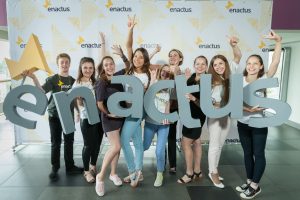
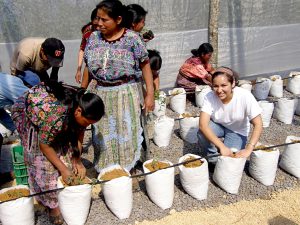

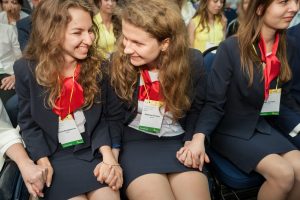
 MR. TERRY TOROK SERVES AS THE CHIEF INNOVATION OFFICER AT ENACTUS. A 25+ year veteran of brand development, terry focused his career on linking f500 & startup companies to entertainment MEDIA & cause marketing platforms. He ALSO serves on the boards of buildon & lalela.
MR. TERRY TOROK SERVES AS THE CHIEF INNOVATION OFFICER AT ENACTUS. A 25+ year veteran of brand development, terry focused his career on linking f500 & startup companies to entertainment MEDIA & cause marketing platforms. He ALSO serves on the boards of buildon & lalela.
